Interventions to improve water, sanitation, and hygiene for preventing soil-transmitted helminth infection
- PMID: 35726112
- PMCID: PMC9208960
- DOI: 10.1002/14651858.CD012199.pub2
Interventions to improve water, sanitation, and hygiene for preventing soil-transmitted helminth infection
Abstract
Background: It is estimated that 1.5 billion people are infected with soil-transmitted helminths (STHs) worldwide. Re-infection occurs rapidly following deworming, and interruption of transmission is unlikely without complementary control efforts such as improvements in water, sanitation, and hygiene (WASH) access and behaviours.
Objectives: To assess the effectiveness of WASH interventions to prevent STH infection.
Search methods: We used standard, extensive Cochrane search methods. The latest search date was 19 October 2021.
Selection criteria: We included interventions to improve WASH access or practices in communities where STHs are endemic. We included randomized controlled trials (RCTs), as well as trials with an external control group where participants (or clusters) were allocated to different interventions using a non-random method (non-RCTs). We did not include observational study designs. Our primary outcome was prevalence of any STH infection. Prevalence of individual worms was a secondary outcome, including for Ascaris lumbricoides, Trichuris trichiura, hookworm (Ancylostoma duodenale or Necator americanus), or Strongyloides stercoralis. Intensity of infection, measured as a count of eggs per gram of faeces for each species, was another secondary outcome.
Data collection and analysis: Two review authors independently reviewed titles and abstracts and full-text records for eligibility, performed data extraction, and assessed risk of bias using the Cochrane risk of bias assessment tool for RCTs and the EPOC tool for non-RCTs. We used a random-effects meta-analysis to pool study estimates. We used Moran's I² statistic to assess heterogeneity and conducted subgroup analyses to explore sources of heterogeneity. We assessed the certainty of the evidence using the GRADE approach.
Main results: We included 32 studies (16 RCTs and 16 non-RCTs) involving a total of 52,944 participants in the review. Twenty-two studies (14 RCTs (16 estimates) and eight non-RCTs (11 estimates)) reported on our primary outcome, prevalence of infection with at least one STH species. Twenty-one studies reported on the prevalence of A lumbricoides (12 RCTs and 9 non-RCTs); 17 on the prevalence of T trichiura (9 RCTs and 8 non-RCTs); 18 on the prevalence of hookworm (10 RCTs and 8 non-RCTs); and one on the prevalence of S stercoralis (1 non-RCT). Sixteen studies measured the intensity of infection for an individual STH type. Ten RCTs and five non-RCTs reported on the intensity of infection of A lumbricoides; eight RCTs and five non-RCTs measured the intensity of infection of T trichiura; and eight RCTs and five non-RCTs measured the intensity of hookworm infection. No studies reported on the intensity of infection of S stercoralis. The overall pooled effect estimates showed that the WASH interventions under study may result in a slight reduction of any STH infection, with an odds ratio (OR) of 0.86 amongst RCTs (95% confidence interval (CI) 0.74 to 1.01; moderate-certainty evidence) and an OR of 0.71 amongst non-RCTs (95% CI 0.54 to 0.94; low-certainty evidence). All six of the meta-analyses assessing individual worm infection amongst both RCTs and non-RCTs had pooled estimates in the preventive direction, although all CIs encapsulated the null, leaving the possibility of the null or even harmful effects; the certainty of the evidence ranged from very low to moderate. Individual studies assessing intensity of infection showed mixed evidence supporting WASH. Subgroup analyses focusing on narrow specific subsets of water, sanitation, and hygiene interventions did very little to elucidate which interventions might be better than others. Data on intensity of infection (e.g. faecal egg count) were reported in a variety of ways across studies, precluding the pooling of results for this outcome. We did not find any studies reporting adverse events resulting from the WASH interventions under study or from mass drug administration (MDA).
Authors' conclusions: Whilst the available evidence suggests that the WASH interventions under study may slightly protect against STH infection, WASH also serves as a broad preventive measure for many other diseases that have a faecal oral transmission route of transmission. As many of the studies were done in addition to MDA/deworming (i.e. MDA was ongoing in both the intervention and control arm), our data support WHO recommendations for implementation of improvements to basic sanitation and adequate access to safe water alongside MDA. The biological plausibility for improved access to WASH to interrupt transmission of STHs is clear, but WASH interventions as currently delivered have shown impacts that were lower than expected. There is a need for more rigorous and targeted implementation research and process evaluations in order that future WASH interventions can better provide benefit to users. Inconsistent reporting of the intensity of infection underscores the need to define the minimal, standard data that should be collected globally on STHs to enable pooled analyses and comparisons.
Copyright © 2022 The Authors. Cochrane Database of Systematic Reviews published by John Wiley & Sons, Ltd. on behalf of The Cochrane Collaboration.
Conflict of interest statement
JVG was contracted by a nonprofit, The Task Force for Global Health, to perform the analyses and write this review. JVG declares no other conflicts of interest.
JW has no conflicts of interest to declare.
AM has no conflicts of interest to declare.
LMP has no conflicts of interest to declare.
JB has no conflicts of interest to declare.
RI has engaged in activities related to the topic of this review, including work as a co‐author on opinion pieces, in global health development, and as the previous director of Children Without Worms (a non‐governmental organization leading on soil‐transmitted helminth policy and a program of the Task Force for Global Health). RI declares no other conflicts of interest.
MCF serves on the Soil‐Transmitted Helminthiasis Advisory Committee (Children Without Worms), which receives funding from Johnson & Johnson and GlaxoSmithKline. MCF received a grant from Johnson & Johnson for work assessing the impact of school‐based water, sanitation, and hygiene on soil‐transmitted helminth infection, and has consulted as a member of the Global Scientific Expert Community (Reckitt Benckiser Health Limited). MCF declares no other conflicts of interest.
Children Without Worms’ relationship with Johnson & Johnson and GlaxoSmithKline was assessed by the Cochrane Funding Panel, who determined that Children Without Worms’ financial support did not represent a financial conflict of interest for this review.
Figures
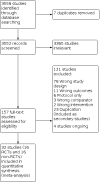

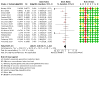
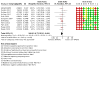
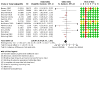
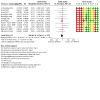
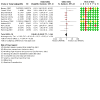
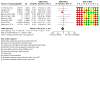
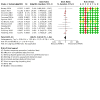
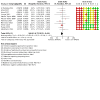
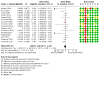
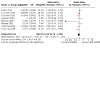

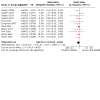
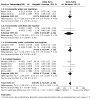
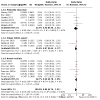
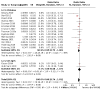
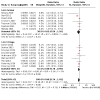
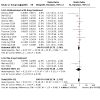
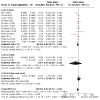
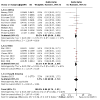
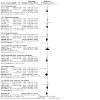
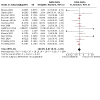
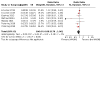

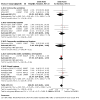
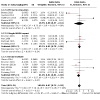
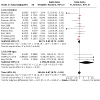
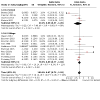
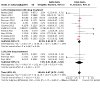
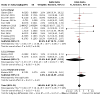
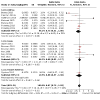
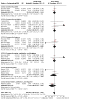
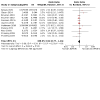
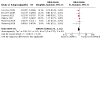
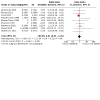
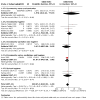
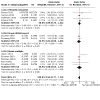
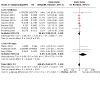
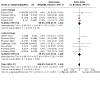
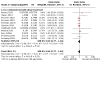
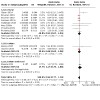
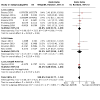
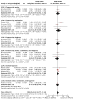
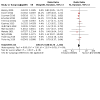
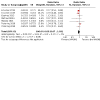
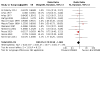

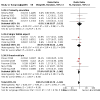
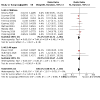
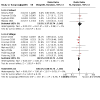
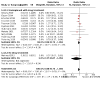
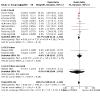
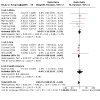
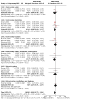
Update of
References
References to studies included in this review
Albright 2006 {published data only}
-
- Albright JW, Basaric-Keys J. Instruction in behavior modification can significantly alter soil-transmitted helminth (STH) re-infection following therapeutic de-worming. Southeast Asian Journal of Tropical Medicine and Public Health 2006;37(1):48-57. - PubMed
Al Delaimy 2014 {published data only}
-
- Al-Delaimy AK, Al-Mekhlafi HM, Lim YA, Nasr NA, Sady H, Atroosh WM, et al. Developing and evaluating health education learning package (HELP) to control soil-transmitted helminth infections among Orang Asli children in Malaysia. Parasites & Vectors 2014;7:416. [DOI: 10.1186/1756-3305-7-416] - DOI - PMC - PubMed
-
- Al-Delaimy AK, Al-Mekhlafi HM, Nasr NA, Lim YA, Mahmud R. Epidemiology of soil-transmitted helminths infections among aboriginal schoolchildren in rural Malaysia. American Journal of Tropical Medicine and Hygiene 2013;89(5 Suppl 1):230.
Arfaa 1977 {published data only}
-
- Arfaa F, Sahba GH, Farahmandian I, Jalali H. Evaluation of the effect of different methods of control of soil-transmitted helminths in Khuzestan, southwest Iran. American Journal of Tropical Medicine and Hygiene 1977;26(2):230-3. - PubMed
Bassey 2020 {published data only}
-
- Bassey DB, Mogaji HO, Dedeke GA, Akeredolu-Ale BI, Abe EM, Oluwole AS, et al. The impact of Worms and Ladders, an innovative health educational board game on soil-transmitted helminthiasis control in Abeokuta, Southwest Nigeria. PLOS Neglected Tropical Diseases 2020;14(9):e0008486. [DOI: 10.1371/journal.pntd.0008486] - DOI - PMC - PubMed
Bieri 2013 {published data only}
Chard 2019 {published data only}
-
- Chard AN, Garn JV, Chang HH, Clasen T, Freeman MC. Impact of a school-based water, sanitation, and hygiene intervention on school absence, diarrhea, respiratory infection, and soil-transmitted helminths: results from the WASH HELPS cluster-randomized trial. Journal of Global Health 2019;9(2):020402. [DOI: 10.7189/jogh.09.020402] - DOI - PMC - PubMed
Clasen 2014 {published data only}
-
- Clasen T, Boisson S, Routray P, Ensink J, Jenkins M, Freeman M, et al. Assessing the health impact of improved rural sanitation: designing and carrying out a cluster randomized, controlled trial in Orissa, India. American Journal of Tropical Medicine and Hygiene 2012;87(5 Suppl 1):231.
-
- Clasen T, Boisson S, Routray P, Torondel B, Bell M, Cumming O, et al. Effectiveness of a rural sanitation programme on diarrhoea, soil-transmitted helminth infection, and child malnutrition in Odisha, India: a cluster-randomised trial. Lancet Global Health 2014;2(11):e645-53. [DOI: 10.1016/s2214-109x(14)70307-9] - DOI - PubMed
-
- Clasen T, Boisson S, Routray P, Torondel B, Jenkins M, Freeman M, et al. The effectiveness of a rural sanitation intervention on health and Orissa, India: a cluster randomized, controlled trial. American Journal of Tropical Medicine and Hygiene 2014;91(5 Suppl 1):215.
Duijster 2017 {published data only}
-
- Duijster D, Monse B, Dimaisip-Nabuab J, Djuharnoko P, Heinrich-Weltzien R, Hobdell M, et al. 'Fit for school' - a school-based water, sanitation and hygiene programme to improve child health: results from a longitudinal study in Cambodia, Indonesia and Lao PDR. BMC Public Health 2017;17(1):302. [DOI: 10.1186/s12889-017-4203-1] - DOI - PMC - PubMed
Dumba 2013 {published data only}
Ercumen 2019 {published data only}
-
- Ercumen A, Benjamin-Chung J, Arnold BF, Lin A, Hubbard AE, Stewart C, et al. Effects of water, sanitation, handwashing and nutritional interventions on soil-transmitted helminth infections in young children: a cluster-randomized controlled trial in rural Bangladesh. PLOS Neglected Tropical Diseases 2019;13(5):e0007323. [DOI: 10.1371/journal.pntd.0007323] - DOI - PMC - PubMed
Erismann 2017 {published data only}
-
- Erismann S, Diagbouga S, Schindler C, Odermatt P, Knoblauch AM, Gerold J, et al. School children's intestinal parasite and nutritional status one year after complementary school garden, nutrition, water, sanitation, and hygiene interventions in Burkina Faso. American Journal of Tropical Medicine and Hygiene 2017;97(3):904-13. [DOI: 10.4269/ajtmh.16-0964] - DOI - PMC - PubMed
Freeman 2013a {published data only}
-
- Freeman MC, Clasen T, Brooker SJ, Akoko DO, Rheingans R. The impact of a school-based hygiene, water quality and sanitation intervention on soil-transmitted helminth reinfection: a cluster-randomized trial. American Journal of Tropical Medicine and Hygiene 2013;89(5):875-83. [DOI: 10.4269/ajtmh.13-0237] - DOI - PMC - PubMed
Gray 2019 {published data only}
-
- Gray DJ, Kurscheid JM, Park MJ, Laksono B, Wang D, Clements ACA, et al. Impact of the “BALatrine” intervention on soil-transmitted helminth infections in Central Java, Indonesia: a pilot study. Tropical Medicine and Infectious Disease 2019;4(141):1-10. [DOI: 10.3390/tropicalmed4040141] - DOI - PMC - PubMed
Gungoren 2007 {published data only}
-
- Gungoren B, Latipov R, Regallet G, Musabaev E. Effect of hygiene promotion on the risk of reinfection rate of intestinal parasites in children in rural Uzbekistan. Transactions of the Royal Society of Tropical Medicine and Hygiene 2007;101(6):564-9. [DOI: 10.1016/j.trstmh.2007.02.011] - DOI - PubMed
Gyorkos 2013 {published data only}
-
- Gyorkos TW, Maheu-Giroux M, Blouin B, Casapia M. Impact of health education on soil-transmitted helminth infections in schoolchildren of the Peruvian Amazon: a cluster-randomized controlled trial. PLOS Neglected Tropical Diseases 2013;7(9):e2397. [DOI: 10.1371/journal.pntd.0002397] - DOI - PMC - PubMed
-
- Gyorkos TW, Maheu-Giroux M, Blouin B, Casapia M. The impact of a health education intervention on soil transmitted helminth infections in grade 5 schoolchildren of the Peruvian Amazon: a cluster-randomized controlled trial. Tropical Medicine & International Health 2013;18:61. [DOI: 10.1111/tmi.12162] - DOI - PMC - PubMed
Hadidjaja 1998 {published data only}
-
- Hadidjaja P, Bonang E, Suyardi MA, Abidin SA, Ismid IS, Margono SS. The effect of intervention methods on nutritional status and cognitive function of primary school children infected with Ascaris lumbricoides. American Journal of Tropical Medicine and Hygiene 1998;59(5):791-5. - PubMed
Han 1988 {published data only}
-
- Han AM, Hlaing T, Kyin ML, Saw T. Hand washing intervention to reduce ascariasis in children. Transactions of the Royal Society of Tropical Medicine and Hygiene 1988;82(1):153. - PubMed
Hurlimann 2018 {published data only}
-
- Hurlimann E, Silue KD, Zouzou F, Ouattara M, Schmidlin T, Yapi RB, et al. Effect of an integrated intervention package of preventive chemotherapy, community-led total sanitation and health education on the prevalence of helminth and intestinal protozoa infections in Cote d'Ivoire. Parasites & Vectors 2018;11(1):115. [DOI: 10.1186/s13071-018-2642-x] - DOI - PMC - PubMed
Kamga 2011 {published data only}
Knee 2021 {published data only}
Mahmud 2015 {published data only}
Makata 2021 {published data only}
-
- Makata K, Ensink J, Ayieko P, Hansen C, Sichalwe S, Mngara J, et al. Hand hygiene intervention to optimise soiltransmitted helminth infection control among primary school children: the Mikono Safi cluster randomised controlled trial in northwestern Tanzania. BMC Medicine 2021;19(125):1-13. [DOI: 10.1186/s12916-021-01987-6] - DOI - PMC - PubMed
-
- Makata K, Kinung'hi S, Hansen C, Ayieko P, Sichalwe S, McHaro O, et al. Hand hygiene intervention to optimize helminth infection control: design and baseline results of Mikono Safi - an ongoing school-based cluster-randomised controlled trial in NW Tanzania. PLOS ONE 2020;15(12):e0242240. - PMC - PubMed
Mascie‐Taylor 1999 {published data only}
-
- Mascie-Taylor CG, Alam M, Montanari RM, Karim R, Ahmed T, Karim E, et al. A study of the cost effectiveness of selective health interventions for the control of intestinal parasites in rural Bangladesh. Journal of Parasitology 1999;85(1):6-11. - PubMed
Monse 2013 {published data only}
-
- Monse B, Benzian H, Naliponguit E, Belizario V, Schratz A, Palenstein HW. The Fit for School Health Outcome Study - a longitudinal survey to assess health impacts of an integrated school health programme in the Philippines. BMC Public Health 2013;13:256. [DOI: 10.1186/1471-2458-13-256] - DOI - PMC - PubMed
Muennoo 1997 {published data only}
-
- Muennoo C, Achwanichkul W, Sa-nguankiat S, Pubampen S, Maipanich W, Anataphruti M, et al. The impact of primary health care intervention on reinfection of soil-transmitted helminths in the community. Southeast Asian Journal of Tropical Medicine and Public Health 1997;28(4):816-9. - PubMed
Ndenecho 2002 {published data only}
-
- Ndenecho L, Ndamukong KJ, Matute MM. Soil transmitted nematodes in children in Buea Health District of Cameroon. East African Medical Journal 2002;79(8):442-5. - PubMed
Nery 2019a {published data only}
-
- Nery SV, Campbell S, Llewllyn S, Andrews R, Gray D, Traub R, et al. WASH for WORMS: a cluster randomised controlled trial of the impact of a community-based WASH programme on soil-transmitted helminth infections in Timor-Leste - midpoint results at six months follow-up. Tropical Medicine and International Health 2015;20(Suppl 1):5. [DOI: 10.1111/tmi.12575] - DOI
-
- Nery SV, McCarthy JS, Traub R, Weking E, Gray D, Andrews R, et al. Wash for worms: End-point results from a cluster randomized controlled trial of the impact of a community-based integrated wash and deworming program on soil-transmitted helminth infections. American Journal of Tropical Medicine and Hygiene 2016;95(5 Suppl 1):214. [DOI: 10.4269/ajtmh.abstract2016] - DOI
-
- Nery SV, Traub RJ, McCarthy JS, Clarke NE, Amaral S, Llewellyn S, et al. WASH for WORMS: A cluster-randomized controlled trial of the impact of a community integrated water, sanitation, and hygiene and deworming intervention on soil-transmitted helminth infections. American Journal of Tropical Medicine and Hygiene 2019;100(3):750-61. [DOI: 10.4269/ajtmh.18-0705] - DOI - PMC - PubMed
Park 2016 {published data only}
Patil 2014 {published data only}
-
- Patil SR, Arnold BF, Salvatore AL, Briceno B, Ganguly S, Colford JM Jr, et al. The effect of India's total sanitation campaign on defecation behaviors and child health in rural Madhya Pradesh: a cluster randomized controlled trial. PLOS Medicine 2014;11(8):e1001709. [DOI: 10.1371/journal.pmed.1001709] - DOI - PMC - PubMed
Pickering 2019 {published data only}
-
- Pickering AJ, Njenga SM, Steinbaum L, Swarthout J, Lin A, Arnold BF, et al. Effects of single and integrated water, sanitation, handwashing, and nutrition interventions on child soil-transmitted helminth and giardia infections: a cluster-randomized controlled trial in rural Kenya. PLOS Medicine 2019;16(6):e1002841. [DOI: 10.1371/journal.pmed.1002841] - DOI - PMC - PubMed
-
- Pickering AJ, Njenga SM, Steinbaum L, Swarthout J, Lin A, Arnold BF, et al. Effects of single and integrated water, sanitation, handwashing, and nutrition interventions on child soil-transmitted helminth and Giardia infections: a cluster-randomized controlled trial in rural Kenya. PLOS Medicine 2019;16(6):e1002841. - PMC - PubMed
Reese 2019 {published data only}
-
- Reese H, Routray P, Torondel B, Sinharoy SS, Mishra S, Freeman MC, et al. Assessing longer-term effectiveness of a combined household-level piped water and sanitation intervention on child diarrhoea, acute respiratory infection, soil-transmitted helminth infection and nutritional status: a matched cohort study in rural Odisha, India. International Journal of Epidemiology 2019;48(6):1757-67. [DOI: 10.1093/ije/dyz157] - DOI - PMC - PubMed
Steinmann 2014 {published data only}
-
- Steinmann P, Yap P, Utzinger J, Du ZW, Jiang JY, Chen R, et al. Control of soil-transmitted helminthiasis in Yunnan province, People's Republic of China: experiences and lessons from a 5-year multi-intervention trial. Acta Tropica 2014;141(Pt B):271-80. [DOI: 10.1016/j.actatropica.2014.10.001] - DOI - PubMed
References to studies excluded from this review
Abdoli 2017 {published data only}
Abraham 2018 {published data only}
ACTRN12613000523707 {published data only}
-
- ACTRN12613000523707. The effectiveness and acceptability of the 'BALatrine': a culturally acceptable latrine intervention in resource limited environments [Indonesian villagers' use of a new household latrine to reduce soil transmitted helminth infection and environmental contamination]. anzctr.org.au/Trial/Registration/TrialReview.aspx?ACTRN=12613000523707 (first received 6 May 2013).
ACTRN12617001048370 (a) {published data only}
-
- ACTRN12617001048370. A randomized controlled trial to evaluate the impact of combining hygiene education with deworming [A randomized controlled trial to evaluate if combining school-based hygiene education with mass drug administration (MDA) of deworming medication decreases the reinfection rate of soil-transmitted helminths (STH) in school-age children]. anzctr.org.au/Trial/Registration/TrialReview.aspx?id=373102 (first received 8 June 2017).
ACTRN12617001048370 (b) {published data only}
-
- ACTRN12617001048370. A randomized controlled trial to evaluate the impact of combining hygiene education with deworming. who.int/trialsearch/trial2.aspx? Trialid=actrn12617001048370 (first received 8 June 2017).
Addiss 2015 {published data only}
Ai Ya 2011 {published data only}
-
- Ai-Ya Z, An-Mei L, Guang-Chu L, Jian-Jun X, Liang-Xian S. Effect of comprehensive control in demonstration plots of parasitic diseases in Guizhou Province. Zhongguo Xue Xi Chong Bing Fang Zhi Za Zhi 2011;23(5):515-7. - PubMed
Akor 2021 {published data only}
-
- Akor JO, Obisike VU, Omudu EA, Imandeh GN. Prevalence and socio-environmental factors associated with polyparasitism, Benue State, Nigeria. Nigerian Journal of Parasitology 2021;42(1):181-5.
Albonico 1996 {published data only}
Alegria 2015 {published data only}
Alfano 2015 {published data only}
-
- Alfano S, Piemonte M, Cringoli S, Gualdieri L, Della Pepa ME, Rinaldi L, et al. Persistence and transmission of intestinal parasites in immigrants in Southern Italy. Tropical Medicine and International Health 2015;20(Suppl 1):388. [DOI: 10.1111/tmi.12574] - DOI
Altinoz Aytar 2015 {published data only}
Anantaphruti 2008 {published data only}
-
- Anantaphruti MT, Waikagul J, Maipanich W, Nuamtanong S, Watthanakulpanich D, Pubampen S, et al. School-based health education for the control of soil-transmitted helminthiases in Kanchanaburi province, Thailand. Annals of Tropical Medicine & Parasitology 2008;102(6):521-8. [DOI: 10.1179/136485908x311768] - DOI - PubMed
Appleby 2019 {published data only}
Asaolu 2003 {published data only}
-
- Asaolu SO, Ofoezie IE. The role of health education and sanitation in the control of helminth infections. Acta Tropica 2003;86(2-3):283-94. - PubMed
Basualdo 2009 {published data only}
-
- Basualdo J. Community participation in the control of intestinal parasitoses at a rural site in Argentina. Revista Panamericana De Salud Publica/Pan American Journal of Public Health 2009;26(6):471-7. - PubMed
-
- Pezzan BC, Minvielle MC, Ciarmela ML, Apezteguía MC, Basualdo JA. Community participation in the control of intestinal parasitoses at a rural site in Argentina. Revista Panamericana de Salud Pública 2009;26(6):471-7. - PubMed
Benjamin Chung 2018 {published data only}
-
- Benjamin-Chung J, Amin N, Ercumen A, Arnold BF, Hubbard AE, Unicomb L, et al. A randomized controlled trial to measure spillover effects of a combined water, sanitation, and handwashing intervention in Rural Bangladesh. American Journal of Epidemiology 2018;187(8):1733-44. [DOI: 10.1093/aje/kwy046] - DOI - PMC - PubMed
Bentwich 2019a {published data only}
-
- Bentwich Z, Team N. An innovative integrative approach for neglected tropical diseases (NTD) control in Ethiopia: sustained reduction in prevalence of schistosoma and soil-transmitted helminthiasis (STH) infections in rural and urban populations. American Journal of Tropical Medicine and Hygiene 2019;101(5 Suppl):168-9. [DOI: 10.4269/ajtmh.abstract2019] - DOI
Bentwich 2019b {published data only}
-
- Bentwich Z, Rennert L. Health education and behavior change of children are essential for controlling NTDS: lessons from a successful pilot trial in Ethiopia. American Journal of Tropical Medicine and Hygiene 2019;101(5 Suppl):169. [DOI: 10.4269/ajtmh.abstract2019] - DOI
Bieri 2014 {published data only}
Bird 2014 {published data only}
Brito 2013 {published data only}
-
- Brito M, Lemos M, Mirante C, Moura S. Preliminary results from an intervention study in children aged 2-16 years in controlling Schistosomiasis in a village from Bengo Province (Angola). Tropical Medicine and International Health 2013;18(Suppl 1):123. [DOI: 10.1111/tmi.12163] - DOI
Brocklehurst 2014 {published data only}
Brown 2015 {published data only}
-
- Brown J, Cumming O, Bartram J, Cairncross S, Ensink J, Holcomb D, et al. A controlled, before-and-after trial of an urban sanitation intervention to reduce enteric infections in children: research protocol for the Maputo Sanitation (MapSan) study, Mozambique. BMJ Open 2015;5(6):e008215. [DOI: 10.1136/bmjopen-2015-008215] - DOI - PMC - PubMed
Cairncross 1987 {published data only}
-
- Chandler AC. A comparison of helminthic and protozoan infections in two Egyptian villages two years after the installation of sanitary improvements in one of them. American Journal of Tropical Medicine and Hygiene 1954;3(1):59-73. - PubMed
Campbell 2014 {published data only}
-
- Campbell SJ, Savage GM, Gray DJ, Atkinson JA, Soares Magalhaes RJ, Nery SV. Water, Sanitation, and Hygiene (WASH): a critical component for sustainable soil-transmitted helminth and schistosomiasis control. PLOS Neglected Tropical Diseases 2014;8(4):e2651. [DOI: 10.1371/journal.pntd.0002651] - DOI - PMC - PubMed
Chandler 1954 {published data only}
-
- Chandler AC. An evaluation of the effects, after two years, of sanitary improvements in an Egyptian village. Journal of the Egyptian Medical Association 1953;36(5-6):357-67. - PubMed
Chen 1969 {published data only}
-
- Chen ER, Hsieh HC. Study of ascariasis control in Taiwan. Taiwan Yi Xue Hui Za Zhi 1969;68(8):411-27. - PubMed
Chen 2021 {published data only}
-
- Chen YD, Li HZ, Xu LQ, Qian MB, Tian HC, Fang YY, et al. Effectiveness of a community-based integrated strategy to control soil-transmitted helminthiasis and clonorchiasis in the People's Republic of China. Acta Tropica 2021;214:105650. - PubMed
Clarke 2018 {published data only}
-
- ACTRN12615001012561. Should integrated deworming and water, sanitation and hygiene (WASH) programs for soil-transmitted helminth (STH) control be delivered in schools or the community? A pilot study [A pilot study comparing the impact of school- and community-based integrated water, sanitation and hygiene (WASH) and deworming programmes on soil-transmitted helminth infections in school-aged children in Timor-Leste]. anzctr.org.au/Trial/Registration/TrialReview.aspx?id=369077 (first received 9 April 2015).
-
- Clarke NE, Clements AC, McCarthy J, Traub R, Gray D, Nery SV. Investigating the differential impact of school and community-based integrated control programs for soil-transmitted helminths in Timor-Leste: the (S)WASH-D for Worms pilot study. American Journal of Tropical Medicine and Hygiene 2017;97(5 Suppl 1):374.
-
- Clarke NE, Clements ACA, Amaral S, Richardson A, McCarthy JS, McGown J, et al. (S)WASH-D for Worms: A pilot study investigating the differential impact of school- versus community-based integrated control programs for soil-transmitted helminths. PLOS Neglected Tropical Diseases 2018;12(5):e0006389. [DOI: 10.1371/journal.pntd.0006389] - DOI - PMC - PubMed
Coffeng 2018 {published data only}
-
- Coffeng LE, Vaz Nery S, Gray DJ, Bakker R, Vlas SJ, Clements ACA. Predicted short and long-term impact of deworming and water, hygiene, and sanitation on transmission of soil-transmitted helminths. PLOS Neglected Tropical Diseases 2018;12(12):e0006758. [DOI: 10.1371/journal.pntd.0006758] - DOI - PMC - PubMed
Curtale 2003 {published data only}
-
- Curtale F, Abd-el Wahab Hassanein Y, El Wakeel A, Barduagni P, Savioli L. The School Health Programme in Behera: an integrated helminth control programme at governorate level in Egypt. Acta Tropica 2003;86(2-3):295-307. - PubMed
De Carneri 1992 {published data only}
Dias 1981 {published data only}
-
- Dias LC. Soil-transmitted helminths in Brazil. Boletín Chileno de parasitología 1981;36(1-2):27-8. - PubMed
Falavigna Guilherme 2004 {published data only}
-
- Falavigna Guilherme AL, De Araujo SM, Teles Pupulim AR, De Lima JE Jr, Morais Falavigna DL. Intestinal parasites and commensals of settled populations in three land settlements (Vilas Rurais) of Parana state, Brazil. Acta Scientiarum - Health Sciences 2004;26(2):331-6.
Fan 2012 {published data only}
-
- Fan CK, Liao CW, Lyu SY, Sukati H, Ji DD, Cho CM, et al. Prevalence of intestinal parasitic infections among primary school children in areas devoid of sanitation in northwestern Kingdom of Swaziland, Southern Africa. Pathogens and Global Health 2012;106(1):60-2. [DOI: 10.1179/2047773211Y.0000000017] - DOI - PMC - PubMed
Figueroa 1985 {published data only}
-
- Figueroa L, Puga S, Schweikart A, Franjola R. Enteroparasitoses in school children from the locality of Chonchi and its relationship with some basic sanitation factors. Insular Chiloe, X region, Chile. Boletin Chileno de Parasitologia 1985;40(3-4):94-6. - PubMed
Fort 1915 {published data only}
Freeman 2012 {published data only}
Freeman 2019 {published data only}
Garn 2016 {published data only}
Gelaye 2014 {published data only}
-
- Gelaye B, Kumie A, Aboset N, Berhane Y, Williams MA. School-based intervention: evaluating the role of water, latrines and hygiene education on trachoma and intestinal parasitic infections in Ethiopia. Journal of Water Sanitation and Hygiene for Development 2014;4(1):120-30. [DOI: 10.2166/washdev.2013.060] - DOI - PMC - PubMed
Greene 2012 {published data only}
-
- Greene LE, Freeman MC, Akoko D, Saboori S, Moe C, Rheingans R. Impact of a school-based hygiene promotion and sanitation intervention on pupil hand contamination in Western Kenya: a cluster randomized trial. American Journal of Tropical Medicine and Hygiene 2012;87(3):385-93. [DOI: 10.4269/ajtmh.2012.11-0633] - DOI - PMC - PubMed
Grimes 2016 {published data only}
Hastings 2014 {published data only}
Hayashi 1981 {published data only}
-
- Hayashi S, Suemitsu T, Kunii C. Soil-transmitted helminthiasis control program in Japan. Boletín Chileno de parasitología 1981;36(1-2):2-5. - PubMed
Homeida 1994 {published data only}
-
- Homeida M, Zimmerman V, Baraka OZ, Sulieman SM, Awad K, Omer K, et al. Helminth infections in Sudan. Lancet 1994;344(8931):1228. - PubMed
Hong Chun 2011 {published data only}
-
- Hong-Chun T, Meng T, Hong X, Han-Gang L, Xiao-Ke Z, Chang-Hua L, et al. Evaluation on effectiveness of comprehensive control model for soil-transmitted nematodiasis. Zhongguo Xue Xi Chong Bing Fang Zhi Za Zhi 2011;23(5):518-23. - PubMed
Hosain 2003 {published data only}
-
- Hosain GM, Saha S, Begum A. Impact of sanitation and health education on intestinal parasite infection among primary school aged children of Sherpur, Bangladesh. Tropical Doctor 2003;33(3):139-43. - PubMed
ISRCTN16961836 {published data only}
-
- ISRCTN16961836. Efficacy of a behavioural intervention based on food consumption, nutritional state and micronutrient deficiency in under five children, Angola. who.int/trialsearch/trial2.aspx? Trialid=isrctn16961836 (first received 2 June 2016).
ISRCTN17030361 {published data only}
-
- ISRCTN17030361. Combining treatment, sanitation and health education to control neglected tropical diseases. An integrated approach to control neglected tropical diseases. doi.org/10.1186/ISRCTN17030361 (first received 19 July 2017).
ISRCTN45013173 {published data only}
-
- ISRCTN45013173. Mikono Safi Study - Hand hygiene intervention to optimise helminthic infections control: a cluster-randomised controlled trial in NW Tanzania. doi.org/10.1186/ISRCTN45013173 (first received 9 June 2017).
Jiang 2015 {published data only}
-
- Jiang HY, Yang CL, Zhou XJ. Effect of strategy of control and prevention of intestinal nematodiasis in Dongtai City, Jiangsu Province. Zhongguo Xue Xi Chong Bing Fang Zhi Za Zhi 2015;27(4):403-9. - PubMed
Kobayashi 1984 {published data only}
-
- Kobayashi A. Japanese program for the control of geohelminthiasis. Salud Pública de México 1984;26(6):579-88. - PubMed
Krushinskaia 1976 {published data only}
-
- Krushinskaia TF, Khomiakov AV, Fonbernshtein M, Ermolova RS. Forms and effectiveness of health education in the prevention of ascaridiasis. Zdravookhr Ross Fed 1976;3:21-3. - PubMed
Kurscheid 2018 {published data only}
-
- Kurscheid J, Bendrups D, Susilo J, Williams C, Amaral S, Laksono B, et al. Shadow puppets and neglected diseases: evaluating a health promotion performance in Rural Indonesia. International Journal of Environmental Research and Public Health 2018;15(9):1-12. [DOI: 10.3390/ijerph15092050] - DOI - PMC - PubMed
Lansdown 2002 {published data only}
Le Hung 2005 {published data only}
-
- Le Hung Q, Vries PJ, Giao PT, Binh TQ, Nam NV, Kagerj PA. Intestinal helminth infection in an ethnic minority commune in southern Vietnam. Southeast Asian Journal of Tropical Medicine and Public Health 2005;36(3):623-8. - PubMed
Li 2011 {published data only}
-
- Li WJ, Chen SR, Li YH, Fang W, K CR, Wang LB. Evaluation on intervention measures of comprehensive control for parasitic diseases in demonstration plot of Xiangyun County. Chinese Journal of Schistosomiasis Control 2011;23(5):524-8. - PubMed
-
- Li WJ, Chen SR, Li YH, Fang W, K CR, Wang LB. Evaluation on intervention measures of comprehensive control for parasitic diseases in demonstration plot of Xiangyun County. Zhongguo Xue Xi Chong Bing Fang Zhi Za Zhi 2011;23(5):524-8. - PubMed
Liu 2017 {published data only}
-
- Liu C, Lu L, Zhang L, Luo R, Sylvia S, Medina A, et al. Effect of deworming on indices of health, cognition, and education among schoolchildren in rural China: a cluster-randomized controlled trial. American Journal of Tropical Medicine and Hygiene 2017;96(6):1478-89. [DOI: 10.4269/ajtmh.16-0354] - DOI - PMC - PubMed
Luong 2003 {published data only}
Mao 2021 {published data only}
Mara 2010 {published data only}
Marwah 1958 {published data only}
-
- Marwah SN. An experiment in interruption of man-to-man faecal and helminthic circulation in a rural community. Journal of the Indian Medical Association 1958;31(10):403-8. - PubMed
Means 2018 {published data only}
Messou 1997 {published data only}
-
- Messou E, Sangare SV, Josseran R, LeCorre C, Guelain J. Effect of improvement of sanitary conditions and of domestic hygiene on incidence of enteric for ascaridiasis and ankylostomiasis of children aged 2 to 4 years in rural area of Cote d'Ivoire. Bulletin De La Societe De Pathologie Exotique 1997;90(1):48-50. - PubMed
-
- Messou E, Sangare SV, Josseran R, Le Corre C, Guelain J. Impact of improved sanitary conditions and domestic hygiene on the incidence of ascaridiasis and ancylostomiasis in children two to four years old in the rural zones of Ivory Coast. Bulletin de la Société de Pathologie Exotique 1997;90(1):48-50. - PubMed
Minamoto 2012 {published data only}
Mogaji 2015 {published data only}
-
- Mogaji HO, Ekpo UF, Yusuff QA, Yusuff HA, Adeaga DO, Monday J, et al. Impacts of water, sanitation and hygiene (WASH) interventions on intestinal helminthiasis of school-aged children in Ogun State, South-Western Nigeria. Tropical Medicine and International Health 2015;20(Suppl 1):233. [DOI: 10.1111/tmi.12574] - DOI
Mogaji 2016 {published data only}
-
- Mogaji HO, Dedeke GA, Omotola JO, Yussuf QA, Yussuf HA, Adeaga DO, et al. Prevalence of soil transmitted helminths in water, sanitation, and hygiene (WASH) supported and non-supported schools in Ogun State, Nigeria. American Journal of Tropical Medicine and Hygiene 2017;95(5):182-3.
-
- Mogaji HO, Dedeke GA, Omotola JO, Yussuf QA, Yussuf HA, Adeaga DO, et al. Prevalence of soil transmitted helminths in water, sanitation and hygiene (wash) supported and non supported schools in Ogun state, Nigeria. American Journal of Tropical Medicine and Hygiene 2016;95(5 Suppl 1):183. [DOI: 10.4269/ajtmh.abstract2016] - DOI
Mohapatra 2015 {published data only}
Mwanga 2015 {published data only}
-
- Mwanga JR, Kaatano GM, Siza JE, Chang SY, Ko Y, Kullaya CM, et al. Improved perceptions and practices related to schistosomiasis and intestinal worm infections following PHAST intervention on Kome Island, North-Western Tanzania. Korean Journal of Parasitology 2015;53(5):561-9. [DOI: 10.3347/kjp.2015.53.5.561] - DOI - PMC - PubMed
NCT02362932 {published data only}
-
- NCT02362932. The effect of an urban sanitation intervention on child health. clinicaltrials.gov/ct2/show/NCT02362932 (first received 13 February 2015).
NCT02441699 {published data only}
-
- NCT02441699. Assessing the health impact of a combined water and sanitation intervention in Rural Odisha, India. clinicaltrials.gov/ct2/show/NCT02441699 (first received 12 May 2015).
Nery 2014 {published data only}
-
- Nery SV, Campbell S, Llewllyn S, Andrews R, Gray D, Traub R, et al. Impact of wash and albendazole distribution on infection with soil-transmitted helminths in Timorleste: initial results of a cluster randomized trial. American Journal of Tropical Medicine and Hygiene 2014;91(5 Suppl 1):179.
Nery 2015 {published data only}
-
- Nery SV, McCarthy JS, Traub R, Andrews RM, Black J, Gray D, et al. A cluster-randomised controlled trial integrating a community-based water, sanitation and hygiene programme, with mass distribution of albendazole to reduce intestinal parasites in Timor-Leste: the WASH for WORMS research protocol. BMJ Open 2015;5(12):e009293. [DOI: 10.1136/bmjopen-2015-009293] - DOI - PMC - PubMed
Nery 2019b {published data only}
-
- Nery SV, Clarke NE, Richardson A, Traub R, McCarthy JS, Gray DJ, et al. Risk factors for infection with soil-transmitted helminths during an integrated community level water, sanitation, and hygiene and deworming intervention in Timor-Leste. International Journal for Parasitology 2019;49(5):389-96. [DOI: 10.1016/j.ijpara.2018.12.006] - DOI - PubMed
Nitulescu 1954 {published data only}
-
- Nitulescu V. Anti-helminth preventive measures for use in rural areas. Rev. Stiint. Med. Bucuresti 1954;6(2):65-75. - PubMed
Okoyo 2021 {published data only}
-
- Okoyo C, Campbell SJ, Owaga C, Owuor N, Medley G, Mwandawiro C. Statistical regression model of water, sanitation, and hygiene; treatment coverage; and environmental influences on school-level soil-transmitted helminths and schistosome prevalence in Kenya: secondary analysis of the National Deworming Program data. American Journal of Tropical Medicine and Hygiene 2021;104(6):2251-63. - PMC - PubMed
Palmeirim 2015 {published data only}
-
- Palmeirim M, Hurlimann E, Koffi V, Esse C, Outtara M, Kouassi D, et al. Impact of a health-education package on soil-transmitted helminth and Schistosoma mansoni infections amongst school children in western Cote d'Ivoire. Tropical Medicine and International Health 2015;20(Suppl 1):439. [DOI: 10.1111/tmi.12574] - DOI
Pawestri 2021 {published data only}
-
- Pawestri AR, Thima K, Leetachewa S, Maneekan P, Deesitthivech O, Pinna C, et al. Seasonal prevalence, risk factors, and One Health intervention for prevention of intestinal parasitic infection in underprivileged communities on the Thai-Myanmar border. International Journal of Infectious Diseases 2021;105:152-60. - PubMed
Pirumov 1973 {published data only}
-
- Pirumov KN, Markarian AI, Petrosian NA, Avetisian GA, Martirosian LA. Action aimed at reduction of incidence of ascaridiasis and sanitation of its foci. Zhurnal eksperimental'noi i klinicheskoi meditsiny 1973;13(6):55-60. - PubMed
Purina 1961 {published data only}
-
- Purina EA. Experience of sanitary-educational work in a school in the prevention of ascariasis. Sov Zdravookhr 1961;20(5):52-6. - PubMed
Puspita 2020 {published data only}
Qian 2011 {published data only}
-
- Qian Z, Ying-Dan C, Long-Qi X, Can-Jun Z, Hua-Zhong L. Application and evaluation on five health education patterns of integrated control for parasitic diseases. Zhongguo Xue Xi Chong Bing Fang Zhi Za Zhi 2011;23(5):510-4. - PubMed
Raccurt 1972 {published data only}
-
- Raccurt C, Ripert C. Epidemiologic study of necatoriasis in the Lufira Reservoir area (Katanga). 4. Results of the health education campaign and mass treatment of populations with tetrachlorethylene. Bulletin de la Société de Pathologie Exotique Filiales 1972;65(2):293-305. - PubMed
Raso 2018 {published data only}
-
- Raso G, Esse C, Dongo K, Ouattara M, Zouzou F, Hurlimann E, et al. An integrated approach to control soil-transmitted helminthiasis, schistosomiasis, intestinal protozoa infection, and diarrhea: protocol for a cluster randomized trial. JMIR Research Protocols 2018;7(6):e145. [DOI: 10.2196/resprot.9166] - DOI - PMC - PubMed
Reese 2017 {published data only}
-
- Reese H, Routray P, Torondel B, Sclar G, Delea MG, Sinharoy SS, et al. Design and rationale of a matched cohort study to assess the effectiveness of a combined household-level piped water and sanitation intervention in rural Odisha, India. BMJ Open 2017;7(3):e012719. [DOI: 10.1136/bmjopen-2016-012719] - DOI - PMC - PubMed
Rukonge 1987 {published data only}
-
- Rukonge AD. How the integrated project was promoted in Tanzania. JOICFP Review 1987;13:4-8. - PubMed
Sadun 1954 {published data only}
-
- Sadun EH, Vajrasthira S, Maiphoom C. The effect of treatment and sanitation on hookworm infection in Cholburi Province (Central Thailand). American Journal of Tropical Medicine and Hygiene 1954;3(4):764-72. - PubMed
Sahba 1967 {published data only}
-
- Sahba GH, Arfaa F. The effect of sanitation on ascariasis in an Iranian village. Journal of Tropical Medicine and Hygiene 1967;70(2):37-9. - PubMed
Scott 1938 {published data only}
-
- Scott JA, Barlow CH. Limitations to the control of helminth parasites in Egypt by means of treatment and sanitation. American Journal of Hygiene 1938;27(3):619-48.
Stone 2018 {published data only}
Sweet 1929 {published data only}
-
- Sweet WC, Cort WW, Schapiro L, Stoll NR, Riley WA. A study of the effect of treatment and sanitation on the level of hookworm infestation in certain areas in Panama. American Journal of Hygiene-Monographic Series 1929;9:98-138.
Taiwo 2017 {published data only}
-
- Taiwo OT, Sam-Wobo SO, Idowu OA, Talabi AO, Taiwo AM. Comparative assessment of intestinal helminths prevalence in Water, Sanitation and Hygiene (WASH) intervention and non-intervention communities in Abeokuta, Nigeria. Asian Pacific Journal of Tropical Biomedicine 2017;7(6):524-32. [DOI: 10.1016/j.apjtb.2017.05.006] - DOI
Ting Jun 2011 {published data only}
-
- Ting-Jun Z, Ying-Dan C, Long-Qi X. Prevention and treatment of ascariasis in demonstration plots of integrated control from 2006 to 2009. Zhongguo Xue Xi Chong Bing Fang Zhi Za Zhi 2011;23(5):490-4. - PubMed
-
- Zhu TJ, Chen YD, Xu LQ. Prevention and treatment of ascariasis in demonstration plots of integrated control from 2006 to 2009. Chinese Journal of Schistosomiasis Control 2011;23(5):490-4. - PubMed
Torres 1982 {published data only}
-
- Torres P, Gallegos O, Santibanez J, Hauser M. Intestinal protozoan and helminth infections in family groups from 5 rural districts in the south of Chile. Boletin Chileno de Parasitologia 1982;37(3-4):69-71. - PubMed
Zeng 2019 {published data only}
Zhang 2011 {published data only}
-
- Zhang Q, Chen YD, Xu LQ, Zheng CJ, Li HZ. Effect of control on infections of soil-transmitted helminthes in demonstration plots of China for 3 years. Chinese Journal of Schistosomiasis Control 2011;23(5):476-82. - PubMed
Zhu 2015 {published data only}
-
- Zhu T, Jiang T, Chao N, Zhang XZ, Fei JH. Effect of soil-transmitted helminthes control through mass deworming and latrine improvement. Zhongguo Xue Xi Chong Bing Fang Zhi Za Zhi 2015;27(5):510-2. - PubMed
References to ongoing studies
Mationg 2020 {published data only}
-
- Mationg MLS, Williams GM, Tallo VL, Olveda RM, Aung E, Alday P, et al. Determining the impact of a school-based health education package for prevention of intestinal worm infections in the Philippines: protocol for a cluster randomized intervention trial. JMIR Research Protocols 2020;9(6):e18419. [DOI: 10.2196/18419] - DOI - PMC - PubMed
Mekete 2019 {published data only}
-
- Mekete K, Ower A, Dunn J, Sime H, Tadesse G, Abate E, et al. The Geshiyaro Project: a study protocol for developing a scalable model of interventions for moving towards the interruption of the transmission of soil-transmitted helminths and schistosome infections in the Wolaita zone of Ethiopia. Parasites & Vectors 2019;12(503):1-12. [DOI: 10.1186/s13071-019-3757-4] - DOI - PMC - PubMed
-
- Mekete K, Ower A, Dunn JC, Sime H, Tadesse G, Abate E, et al. Interrupting transmission of soil-transmitted helminths and schistosome parasites in Ethiopia - the Geshiyaro project protocol. American Journal of Tropical Medicine and Hygiene 2019;101(5 Suppl):167. [DOI: 10.4269/ajtmh.abstract2019] - DOI
-
- Phillips AE, Mekete K, Ower A, Abate E, Dunn J, Sime H, et al. Impact of water, sanitation and hygiene on community-level intestinal parasites in Ethiopia: the Geshiyaro project. American Journal of Tropical Medicine and Hygiene 2019;101(5 Suppl):579. [DOI: 10.4269/ajtmh.abstract2019] - DOI
NCT04227834 {published data only}
-
- NCT04227834. Soil-transmitted helminth reinfection rates after single and repeated school hygiene education. clinicaltrials.gov/ct2/show/NCT04227834 (first received 14 January 2020).
Phillips 2019 {published data only}
-
- Phillips AE, Mekete K, Ower A, Abate E, Dunn J, Sime H, et al. Impact of water, sanitation and hygiene on community-level intestinal parasites in Ethiopia: the Geshiyaro Project. American Journal of Tropical Medicine and Hygiene 2019;101(5 Suppl 1):579.
Additional references
Al‐Delaimy 2014
Awasthi 2013
Bangert 2017
Bartram 2010
Brown 2013
-
- Brown J, Hien VT, McMahan L, Jenkins MW, Thie L, Liang K, et al. Relative benefits of on-plot water supply over other 'improved' sources in rural Vietnam. Tropical Medicine & International Health 2013;18(1):65-74. - PubMed
Cappello 2004
-
- Cappello M. Global health impact of soil-transmitted nematodes. Pediatric Infectious Disease Journal 2004;23(7):663-4. - PubMed
Clasen 2007
Crompton 2002
-
- Crompton DWT, Nesheim MC. Nutritional impact of intestinal helminthiasis during the human life cycle. Annual Review of Nutrition 2002;22(1):35-59. - PubMed
Dangour 2013
-
- Dangour AD, Watson L, Cumming O, Boisson S, Che Y, Velleman Y, et al. Interventions to improve water quality and supply, sanitation and hygiene practices, and their effects on the nutritional status of children. Cochrane Database of Systematic Reviews 2013, Issue 8. Art. No: CD009382. [DOI: 10.1002/14651858.CD009382.pub2] - DOI - PMC - PubMed
Diaz 2020
-
- Diaz MR, Irish J, Belay Z, Davlin S, Jones A, Imtiaz R. Qualitative systematic literature review of global soil-transmitted helminthiasis prevalence and intensity studies. childrenwithoutworms.org/cww-team-member-authors-new-literature-review-p... (accessed prior to 2 May 2022).
Esrey 1991
Freeman 2013b
Freeman 2017
-
- Freeman MC, Garn JV, Sclar GD, Boisson S, Medlicott K, Alexander KT, et al. The impact of sanitation on infectious disease and nutritional status: a systematic review and meta-analysis. International Journal of Hygiene and Environmental Health 2017;220(6):928-49. - PubMed
Garn 2017
GRADEpro GDT [Computer program]
-
- GRADEpro GDT. Version accessed 12 May 2022. Hamilton (ON): McMaster University (developed by Evidence Prime). Available at gradepro.org.
Grimes 2014
Gulani 2007
Guyatt 2011
-
- Guyatt G, Oxman AD, Akl EA, Kunz R, Vist G, Brozek J, et al. GRADE guidelines: 1. Introduction - GRADE evidence profiles and summary of findings tables. Journal of Clinical Epidemiology 2011;64(4):383-94. - PubMed
Haque 2021
Holland 2001
-
- Holland CV, Kennedy MW. The Geohelminths: Ascaris, Trichuris and Hookworm. 2nd edition. Springer Science & Business Media, 2001.
Horton 2003
-
- Horton J. Global anthelmintic chemotherapy programs: learning from history. Trends in Parasitology 2003;19(9):405-9. - PubMed
Hotez 2017
Howard 2003
-
- Howard G, Bartram J. Domestic quantity, service level and health. 2003. WHO/SDE/WSH/03.02. apps.who.int/iris/handle/10665/67884 (accessed prior to 11 June 2022).
IRC 2014
-
- IRC. Life-cycle costing tool. www.ircwash.org/resources/washcost-tools (accessed prior to 2 May 2022).
Jia 2012
Kar 2008
-
- Kar K, Chambers R. Handbook on community-led total sanitation. www.communityledtotalsanitation.org/resource/handbook-community-led-tota... (accessed prior to 2 May 2022).
Keiser 2008
-
- Keiser J, Utzinger J. Efficacy of current drugs against soil-transmitted helminth infections: systematic review and meta-analysis. JAMA 2008;299(16):1937-48. - PubMed
Leslie 2011
Microsoft Excel [Computer program]
-
- Microsoft Excel. Redmond (WA): Microsoft Corporation, 2018.
Miguel 2004
-
- Miguel E, Kremer M. Worms: Identifying impacts on education and health in the presence of treatment externalities. Econometrica 2004;72(1):159-217.
Montresor 2017
Peal 2010
-
- Peal A, Evans B, Voorden CVD. Hygiene and Sanitation Software: an Overview of Approaches. Vol. viii. Geneva: Water Supply and Sanitation Collaborative Council, 2010.
Pruss‐Ustun 2019
-
- Prüss-Ustün A, Wolf J, Bartram J, Clasen T, Cumming O, Freeman MC, et al. Burden of disease from inadequate water, sanitation and hygiene for selected adverse health outcomes: an updated analysis with a focus on low- and middle-income countries. International Journal of Hygiene and Environmental Health 2019;222(5):765-77. - PMC - PubMed
Pullan 2014
RevMan Web 2020 [Computer program]
-
- Review Manager Web (RevMan Web). Version 4.9.1. The Cochrane Collaboration, 2020. Available at revman.cochrane.org.
Sanchez 2013
Soares 2011
Stocks 2014
Stoltzfus 1997
-
- Stoltzfus RJ, Albonico M, Tielsch JM, Chwaya HM, Savioli L. Linear growth retardation in Zanzibari school children. Journal of Nutrition 1997;127:1099-105. - PubMed
Stoltzfus 1998
-
- Stoltzfus RJ, Albonico M, Chwaya HM, Tielsch JM, Schulze KJ, Savioli L. Effects of the Zanzibar school-based deworming program on iron status of children. American Journal of Clinical Nutrition 1998;68(1):179-86. - PubMed
Strunz 2014
Taylor‐Robinson 2019
-
- Taylo-Robinson DC, Maayan N, Soares-Weiser K, Donegan S, Garner P. Public health deworming programmes for soil‐transmitted helminths in children living in endemic areas. Cochrane Database of Systematic Reviews 2019, Issue 9. Art. No: CD000371. [DOI: 10.1002/14651858.CD000371.pub7] - DOI - PMC - PubMed
Utzinger 2009
WaterAid 2012
-
- WaterAid. WASH: the silent weapon against NTDs. washmatters.wateraid.org/publications/wash-the-silent-weapon-against-ntds (accessed prior to 2 May 2022).
WHO 2002
-
- WHO Expert Committee on the Control of Schistosomiasis (2001: Geneva, Switzerland) & World Health Organization. Prevention and Control of Schistosomiasis and Soil-transmitted Helminthiasis: Report of a WHO Expert Committee. Geneva: World Health Organization, 2002. - PubMed
WHO 2012
-
- World Health Organization. Soil-Transmitted Helminthiases: Eliminating as Public Health Problem Soil-Transmitted Helminthiases in Children: Progress Report 2001-2010 and Strategic Plan 2011-2020. Geneva: World Health Organization, 2012.
WHO 2017
-
- World Health Organization. Guideline: Preventive Chemotherapy to Control Soil-Transmitted Helminth Infections in At-Risk Population Groups. Geneva: World Health Organization, 2017. - PubMed
WHO 2019
-
- World Health Organization. 2030 Targets for Soil-Transmitted Helminthiases Control Programme. Geneva: World Health Organization, 2019.
WHO 2020
-
- World Health Organization. Ending the Neglect to Attain the Sustainable Development Goals: A Road Map for Neglected Tropical Diseases 2021-2030. Geneva: World Health Organization, 2020.
WHO 2021
-
- World Health Organization. Ending the Neglect to Attain the Sustainable Development Goals: A Global Strategy on Water, Sanitation and Hygiene to Combat Neglected Tropical Diseases, 2021-2030. Geneva: World Health Organization, 2021.
Wright 2004
-
- Wright J, Gundry S, Conroy R. Household drinking water in developing countries: a systematic review of microbiological contamination between source and point-of-use. Tropical Medicine & International Health 2004;9(1):106-17. - PubMed
References to other published versions of this review
Publication types
MeSH terms
Substances
LinkOut - more resources
Full Text Sources
Research Materials

